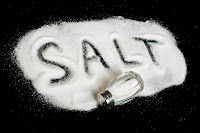 |
| Click to Enlarge |
I've been fiddling around with Sous-Vide since about 2006 but only got serious in 2008-2009. Processing proteins using Sous-Vide with Delta-T is relatively new, although discussed in the Modern-Cusine books published in 2011. I am very familiar with this method, but I only started playing around with this process after purchasing a ThermaQ® Blue Thermocouple, Needle Probe (Diameter is .04"), and their Foam Tape about 2-Years ago. I'll admit since purchasing the HydroPro-Plus, I use probes with 90% of all my cooks. The advantage of the HDP-Plus is the built-in function with NO-Blue tooth. Yea, blue tooth is fantastic, but having to set it up with Thermaworks to your phone and worrying about losing a connection is a constant concern. If you lose your link, you lose DATA. I've lost a few logs this way, not to mention your phone has to be within 30-feet.
Why use Probes? I love being precise, and when you can flawlessly cook a protein with the least amount of processing and achieve no depreciative results, you've hit a grand slam. Some people will say that the benefit of SV is not having to worry about over-processing because it's forgiving. Although this is somewhat true, a diminishing return might not be apparent unless you do a Side-by-Side Test. For example, will you be able to tell the difference between a protein cooked at 6-Hours vs. 9- Hours? You will most likely not, but if you were to measure the moisture loss, it would be higher at 9-Hrs. Again we (I am) are looking for precision and excellent outcomes every time.
Like I said before, I've been using Delta-T for a while, and the advantages are invaluable when processing substantial diameter or thick proteins. I wrote an article outlining the benefits of ΔT when processing Rib-Roasts which is a must-read.
My last
Delta-T cook using Ribyeyes produced phenomenal results, and I wanted to try other proteins, which brings us to the Tri-Tip. I chose the Tri-Tip as my Muse because I've cooked hundreds over the years, and I have dialed in Time and Temps. I make maybe 25-50 Tri-Tips a year. I usually make about 15 plus for the family, and the other ones are for family events and minor catering gigs. Since 1/2021, I have already prepared 12.
I purchased a Cryvac case of Tri-Tips from Costco for a few reasons. First, all Costco meat is mechanically tenderized unless you buy in bulk. Buying in bulk also is much cheaper too. It cost me $7.89 a pound of Bulk Prime Tri-Tip (after trimming, I lost 8 oz), and the Choice versions in the case were $10.89 a pound. This Cryopackage had 6 Tri-Tips, but I've seen as much as 8 of them in one bag.
I trimmed all 6 of them, hoping to get 4 similar in size and weight. I ended up with 3, but I was hoping for a 4th for the test.
All three were dry brined with 0.60% Salt, vac sealed, and refrigerated for 36-Hours before processing. After the elapsed time, they were removed from the vac bag. The surface of the protein was sterilized to kill possible surface pathogens. I used my Seaz-All running it quickly over the surface. At 1500 degrees, all pathogens, if any, were destroyed. I did this on all three. This was a precautionary necessity because one of my processing methods involved a 2-Stage cook at low temps at 4-Hours and did not include pasteurization.
These were simply prepared for the sear: Mayo and BBQ-sauce schmear with some pepper.
Tri-Tip #1- I chose 10 Hours and 30-Minutes based on the previous experience. This was a pretty big one, so I went a little longer than usual.
Tri-Tip #2- I am a big fan of 2-Stage processing because it produces tender meat without sacrificing moisture. Don't use this method unless you understand Low Temp Processing. Many people use this method but with very short times but don't realize how long it takes for the meat to equalize. In this case, the Tri-Tip took 3-Hours to equalize (bath and protein are the same temps), and the last hour was to take advantage of the tenderization effect. After the elapsed time, I used Delta-t at 136.6f to 133f (01:50:05). I was curious to see if I could achieve adequate tenderization using this method. I've written up articles that discuss 2-Stage cooking HERE and HERE....make sure to click on links.
Tri-Tip #3- Delta-T 136.6f to 133f (94-Min to equalize) with a hold at 03:30:00. My hope with this method was to replicate at 5-Hours which typically takes twice as long.
Tri-Tip #4- It will be an addendum to this post when I can find one in a similar size and thickness. My go-to is 3-4 Hours at 113f, then a finish at 133f for 7-8 Hours.
Before I give you the results/opinions, I wanted to address the math and moisture loss. Unless you have an exact clone, the moisture loss calculations are just a guideline. In my previous experiment with the Ribeyes, they were cut off the same primal adjacent to each other, which would make near clones. These Tri-Tips could have come from different animals, and their intramuscular and intermuscular fat would be different.
There were 8 of us taste-testing the Tri-Tips. I did not describe the different cooking processes to the tasters. Apart from eating delicious meat, the tasters only knew they were participating in yet another one of my experiments. Everyone agreed that they were all great, but people had their fondness for one or the other. There were no losers.
Let's keep this very simple.
Tri-Tip #1- Most tender out of all three. Everyone loved it, but some wanted just a bit more chew. Had this been the only Tri-Tip, they would not have said that.
Tri-Tip #2- Least tender, but everyone but that did not detract from how great it turned out. The additional moisture was very evident.
Tri-Tip #3- Best of #1 & #2 in regards to texture. Two guests agree it was likened to eating a great steak.
The caveat to #1, #2, and #3- The slices with copious amounts of intramuscular fat sparked body language and facial expressions that can only be described as love. The cuts with the extra fat made it hard for people to tell which one was, which speaks volumes. People used the following words to describe what they had just eaten: luscious, succulent, exceptional, delicious, and Sh**T; this is damn good.
My takeaway from all of this is: If you are in a rush, use method #3. Do not use #2. #1 was freaking awesome. And my favorite method is and will always be method #4. Although it was not part of this post (expect addendum). I've been using 2-Stage processing Tri-Tips for years and years. See the ultimate Tri-Tip HERE.
The advantage of #4- 2 stage processing preserves moisture and produces tender meat. For example, I can process at 113f for 4-Hours and 133f for 7 hours and get the same results at 10-Hours but better moisture retention.










Comments
Post a Comment